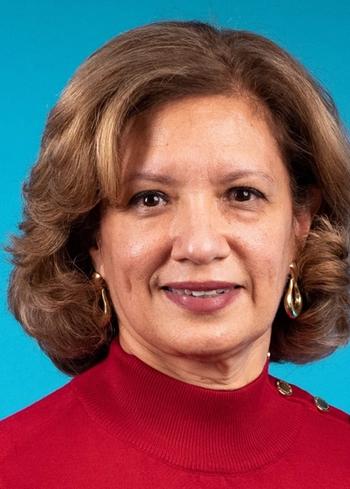
Role of Fukushima Radiation Unclear in Pediatric Thyroid Cancers?
It is too soon to determine the influence of radiation exposure on thyroid cancer risk among children and adolescents exposed to the 2011 Fukushima Daiichi nuclear power plant disaster in Japan, according to the lead author of findings presented at the 85th Annual Meeting of the ATA.
It is too soon to determine the influence of radiation exposure on thyroid cancer risk among children and adolescents who were exposed to the 2011 Fukushima Daiichi nuclear power plant disaster in Japan, according to the lead author of findings presented at the 15th International Thyroid Congress (ITC) and 85th Annual Meeting of the American Thyroid Association (ATA) this week in Lake Buena Vista, Florida.
The report comes on the heels of a newly published
But histologically confirmed cases among Fukushima-area children and adolescents who underwent thyroid cancer surgery “don’t give us a clear view” of how many of those cases are attributable to radiation exposure, insisted coauthor Shinichi Suzuki, MD, PhD, of the department of thyroid and endocrinology at Fukushima Medical University in Fukushima, Japan.
Others agree, said Shigenobu Nagataki, MD, PhD, at a plenary lecture, Wednesday morning.
“We were surprised to see so many children with thyroid cancer,” said Dr. Nagataki, of Nagasaki University, the Radiation Effects Research Foundation in Hiroshima, and the Radiation Effects Association in Tokyo. But “We did not find regional differences in the prevalence of thyroid cancer within Fukushima Prefecture.”
A recent expert meeting on health effects among Fukushima residents concluded that there is not yet “substantial grounds for accepting that these cases are due to the nuclear accident,” Dr. Nagataki noted.
The confirmed thyroid cancers identified in post-disaster screening thus far “appear to have already occurred prior to radiation exposure,” Dr. Suzuki argued. The average size of the thyroid cancers confirmed after the Fukushima disaster have involved smaller tumors, on average, than those seen in Japan before the disaster, he reported.
Compared to rates before the Fukushima power plant disaster, average tumor size was significantly smaller (4.1 cm vs 1.4 cm) for children and adolescents, and the male-to-female patient ratio was lower (1:4.3 vs 1:1.8), Dr. Suzuki noted. Thyroid cancer patients’ average age at surgery was also older among the post–Fukushima disaster patients (age 17.4 years vs 11.9 years).
“We found a huge number of children [with thyroid cancer] by screening but […patient] ages were very different,” Dr. Nagataki noted in his plenary lecture on the Fukushima and Chernobyl nuclear power accidents.
“In Japan, mental and social effects of the disaster are major health problems, compared with health effects from radiation,” Dr. Nagataki said. “Social well-being, depression-and anger at the electrical utilities and government, and requests for compensation-are big, big social problems.”
The screening program established immediately after the Fukushima disaster will be the “gold standard,” and surgical data will be important in monitoring against case over-diagnosis with ultrasound screening, and over-treatment-crucial issues in determining whether or not Fukushima-area residents’ thyroid cancer rates climb in the future, Dr. Suzuki said.
Dr. Suzuki described the screening program and treatments performed for those diagnosed with pediatric thyroid cancers following the Fukushima disaster.
“After the Fukushima Daiichi nuclear power plant accident that followed the Great East Japan Earthquake and Tsunami on March 11, 2011, residents in Fukushima Prefecture faced the problem of low-dose radiation exposure–caused health effects,” explained Dr. Suzuki. “Therefore, thyroid ultrasound examinations (TUE) were started in the same year for people aged 18 years or younger at the time of the disaster.”
Three preliminary baseline surveys screened 368,000 people between October 2011 and March 2014, and a subsequent full-scale survey of 380,000 people was performed from April 2014 to March 2015. Participation rates in primary exams among preliminary baseline and full-scale survey participants were 81.7% and 44.7%, respectively.
This “large-scale and sophisticated” TUE screening program identified thyroid cancers among Fukushima’s children and adolescents, Dr. Suzuki reported. When nodules with diameters of 5.1 mm or larger and/or cysts 20.1 mm or larger were identified, confirmatory exams were undertaken. Thyroid cancer cases were diagnosed by fine needle aspiration cytology, Dr. Suzuki said.
Suspected malignancies were identified in 113 people in the baseline survey and another 25 people in the full-scale survey. Of these, 99 and 6 patients underwent surgery, respectively, and all of these patients except 1 from the baseline survey had histologically confirmed thyroid cancers, Dr. Suzuki said.
Ninety-four patients were diagnosed with papillary thyroid carcinoma (86 classical type; 4 cribriform-morula variant; 3 follicular; and 1 diffuse sclerosing variant), he reported. Three were diagnosed with poorly differentiated thyroid carcinoma.
“Although these cases were found without symptoms, some cases were aggressive, with extra-thyroidal invasion, lymph node metastasis, or distant metastasis,” Dr. Suzuki noted.
Two patients had bilateral thyroid tumors; the remainder had ipsilateral tumors. Eighty percent of patients had cT1 tumors (30% cT1a [< 10 mm] N0, M0; 50% cT1b); 11% had cT2 disease; and 9% had cT3 tumors, he reported. Seven patients had tracheal tumor invasion and two had regional lymph node involvement. Two patients had metastatic disease at diagnosis.
Of patients with confirmed thyroid cancers, mean patient age at the time of the Fukushima disaster was 14.8 years (± 2.7 years), and mean patient age at the time of diagnosis was 17.4 years (± 2.8 years). Total thyroidectomy was performed in only six cases, Dr. Suzuki noted; the others underwent hemithyroidectomy (lobectomy).
Newsletter
Stay up to date on recent advances in the multidisciplinary approach to cancer.
















































































